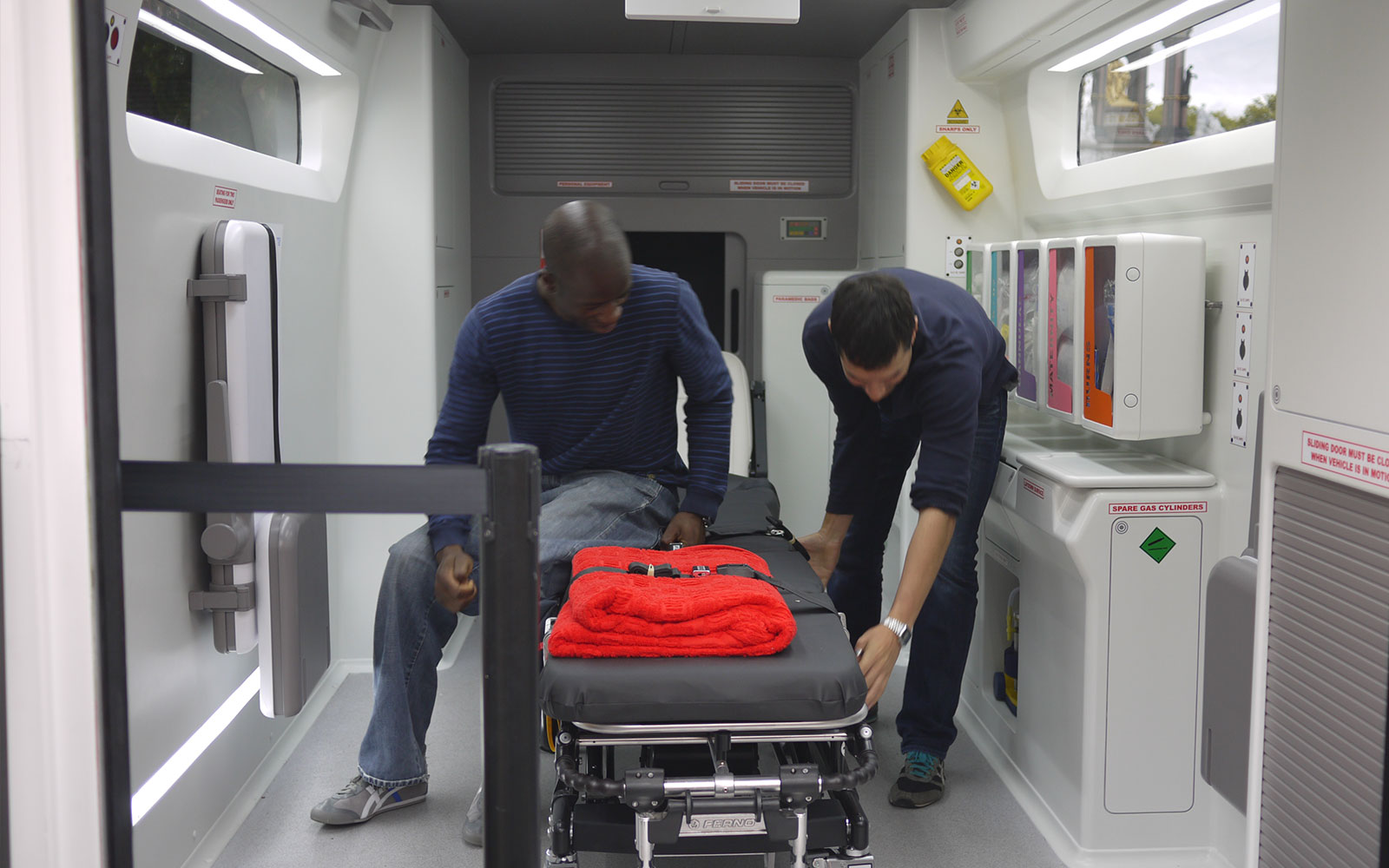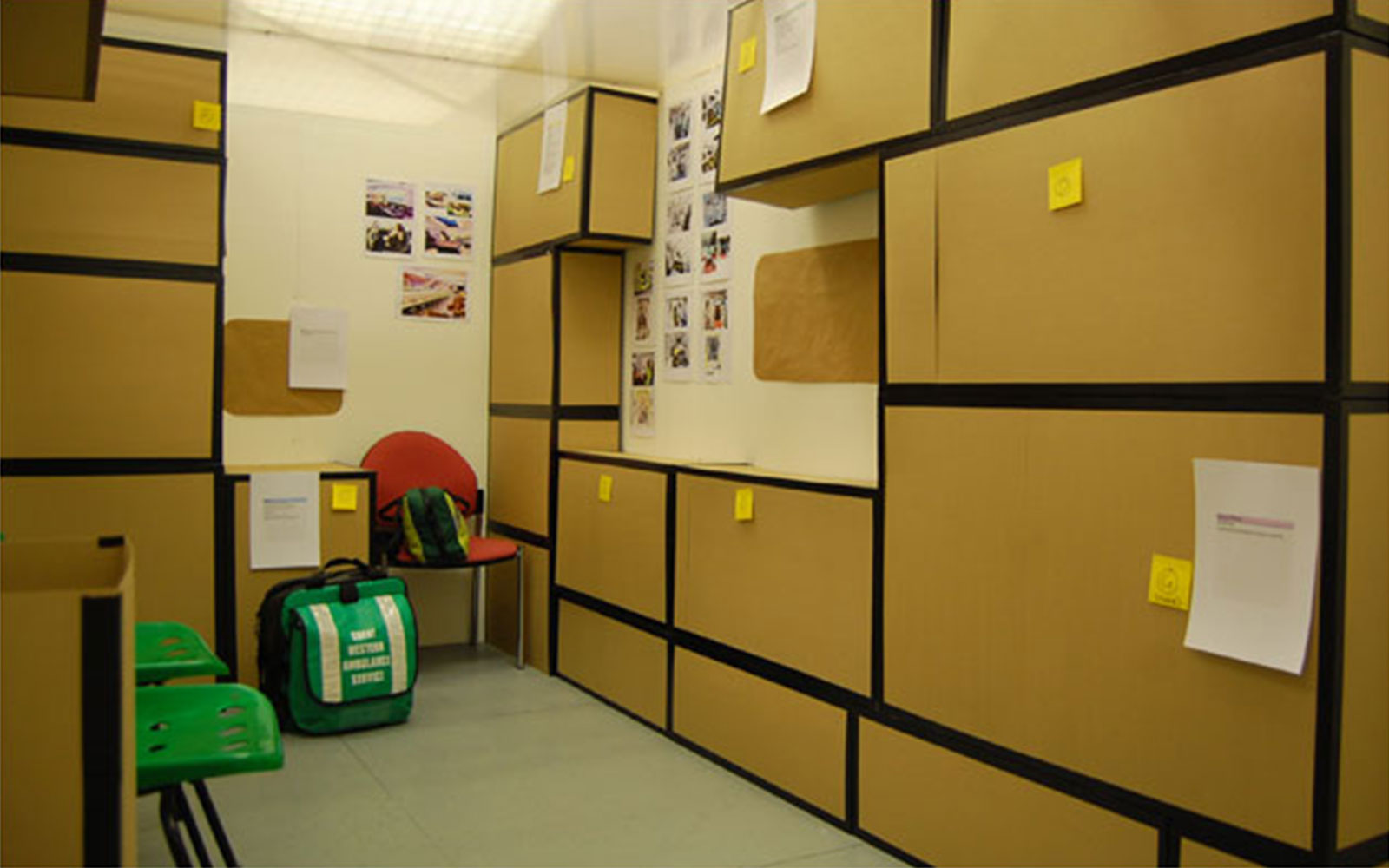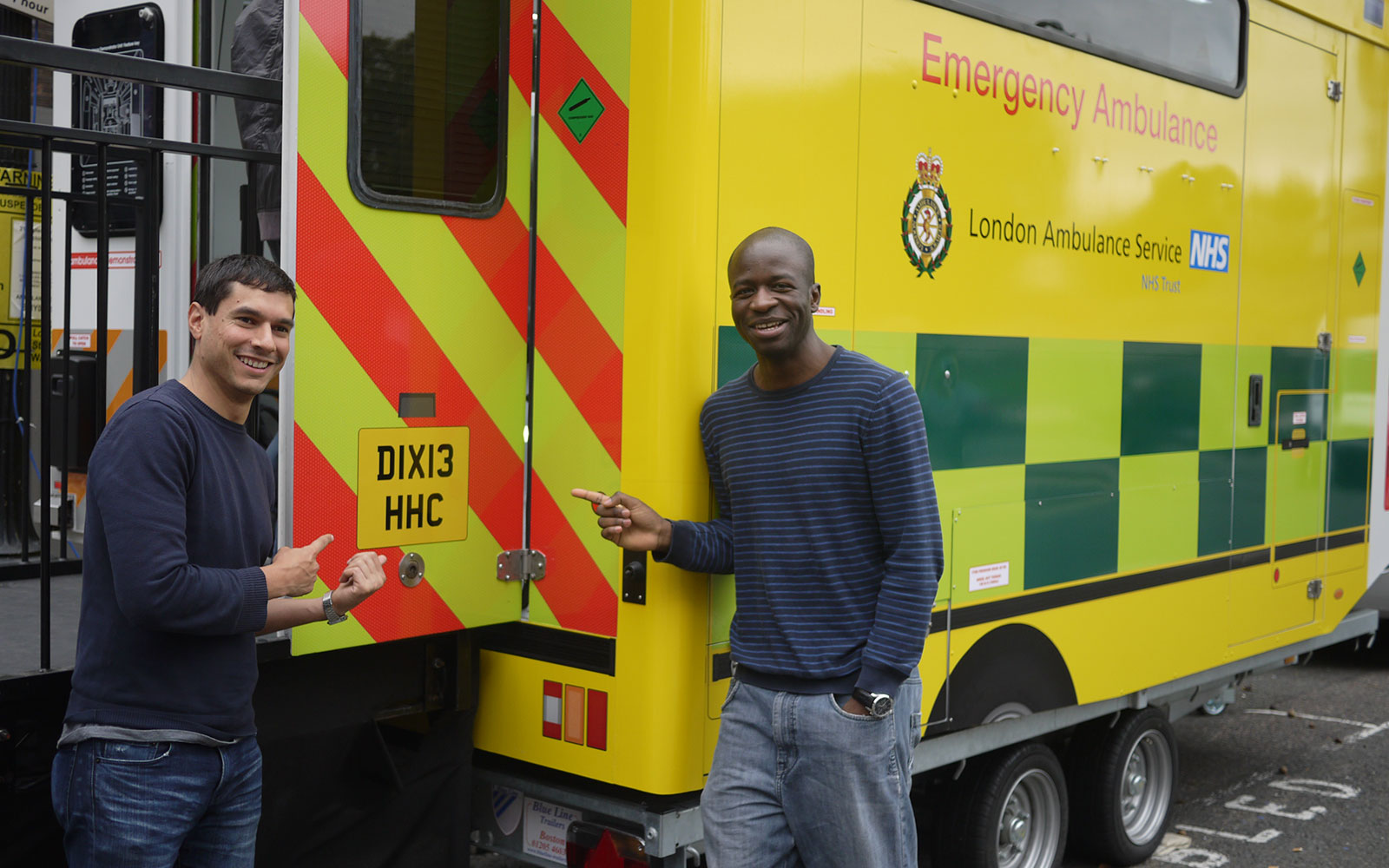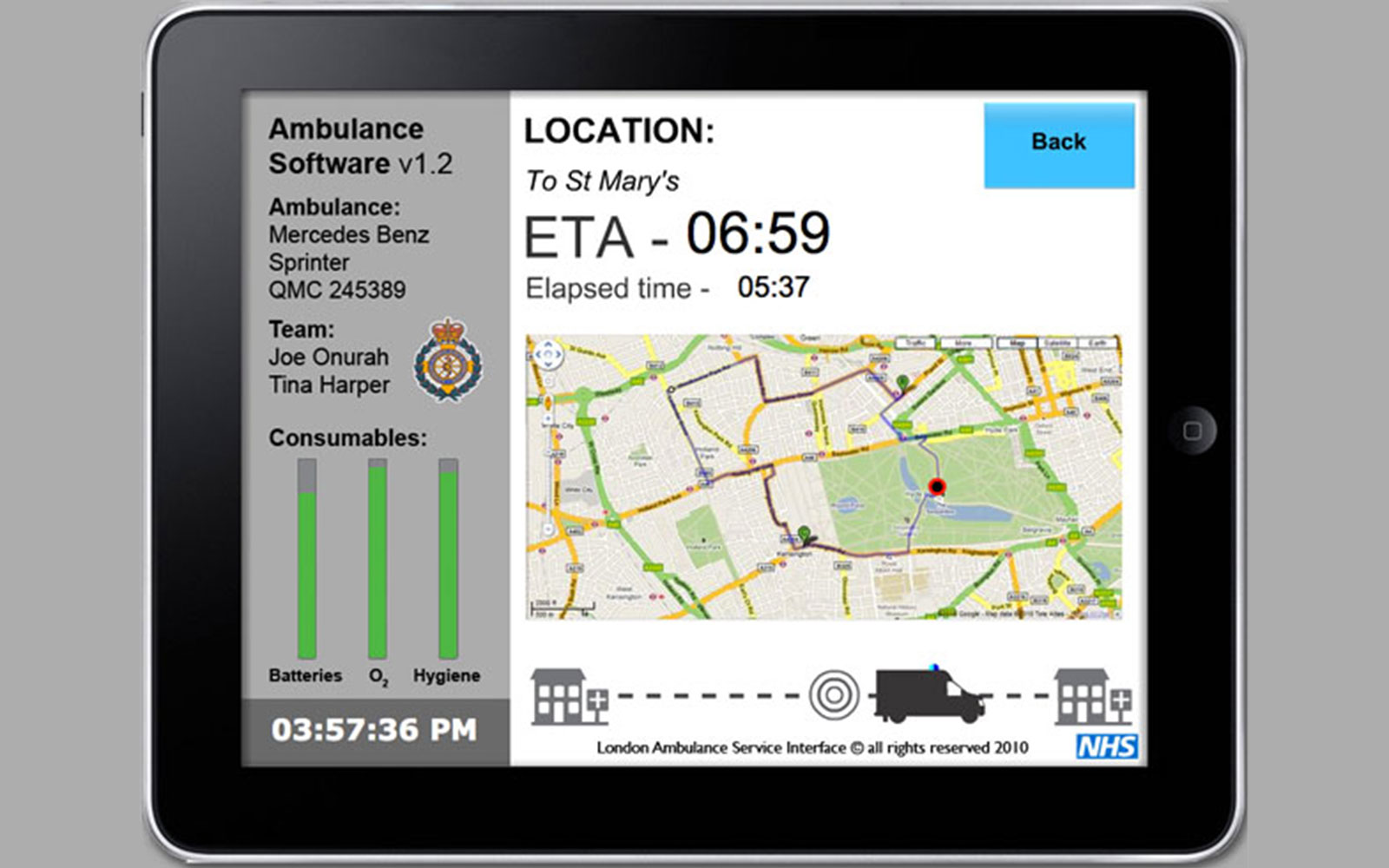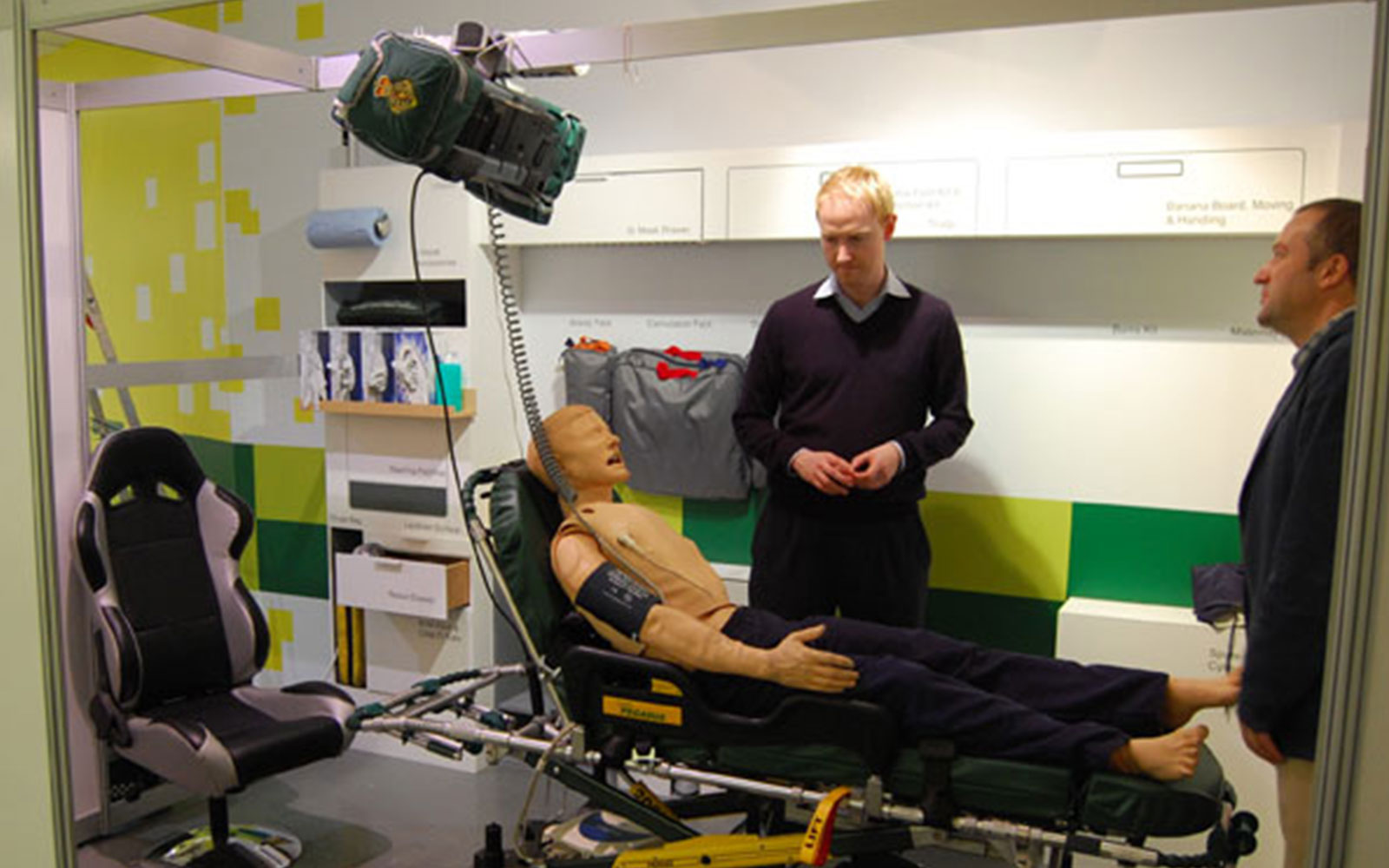Redesigning the Emergency Ambulance
Project Brief
There are many problems with the design of existing ambulances that impact negatively on patients and paramedics alike. Some of the most pressing issues concern the treatment space in the back of the emergency ambulance. This environment is difficult to keep clean given the frequency of use and the resultant lack of opportunity to scrub the vehicle down can lead to hygiene and infection control problems.
"The ambulance interior is difficult to keep clean and paramedics suffer from poor layout and ergonomics..."
This Helen Hamlyn Centre project was aimed to enhance key aspects of the design of the interior in order to improve the patient experience and provide a treatment space that meets the demands of healthcare today.
Redesign for the Emergency Ambulance, was a finalists of the 2011 Victor J. Papanek Social Design Awards and won the prestigious Transport Design of the Year 2012 at The Design Museum’s Design Awards.
What did i do?
Working alongside lead designer Gianpaolo Fusari, we begun with an immersive study that involved joining ambulance crews on several 12-hour shifts, riding in the vehicle on callouts and observing and documenting everything that happened. These gave the opportunity to interview ambulance crews, healthcare providers and patients in situ and observe issues firsthand.
Through these experiences and by working closely with an Emergency Care Practitioner who was seconded to the research team, key insights were gathered and translated into sketch designs.
A full-scale rig simulating the existing treatment space was created to mock-up ideas in cardboard and foam and clinical simulations conducted. Groups of paramedics were then invited to engage and evaluate the different proposals, focusing on opportunities for development.
A full-size working demonstrator was produced in April 2011 to build support and momentum for the development of a new fleet of emergency healthcare vehicles.
This body of design work aims to result in a redesigned ambulance that will support a system of pre-hospital care and replace existing models as they become obsolete.


